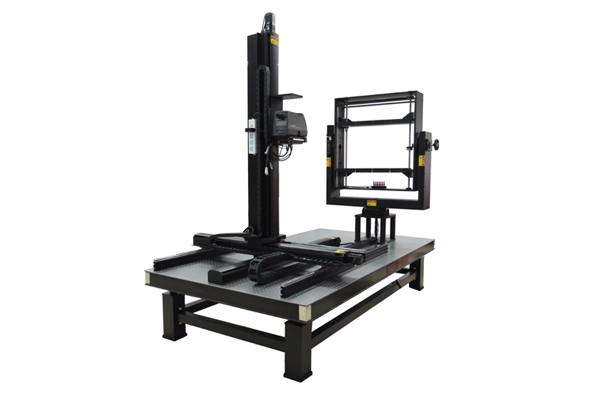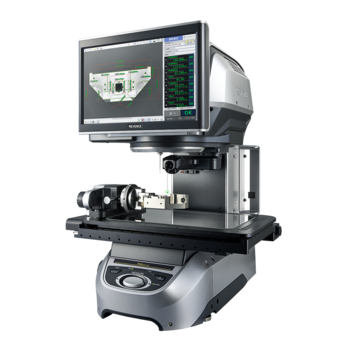Understanding How Optical Measurement Equipment Enhance Top Quality Control Processes
When you're looking to enhance high quality control processes, recognizing optical measurement systems is necessary. Let's check out the essential elements that make optical measurement a game-changer in high quality management.

The Basics of Optical Dimension Systems
Optical dimension systems play an essential role in ensuring product top quality throughout different industries. These systems utilize light-based technologies to collect specific information regarding physical characteristics, such as dimensions, surface area coating, and color. By employing lasers, cameras, and sensing units, you can accomplish non-contact measurements that reduce the risk of damaging fragile items.
Comprehending the principles of these systems is essential for effective quality assurance. They operate on principles like diffraction, representation, and refraction, permitting you to examine various products and shapes. The accuracy and speed of optical dimensions make it possible for real-time monitoring, which helps you recognize problems early in the manufacturing process.
Moreover, these systems can be integrated with software for improved information analysis, producing an extensive quality administration approach. By leveraging optical measurement systems, you not just boost efficiency yet also ensure your items fulfill strict top quality standards, eventually boosting customer fulfillment.
Kinds Of Optical Measurement Technologies
Many sorts of optical dimension technologies are available, each created to fulfill particular demands in top quality control. You might come across laser triangulation, which measures distance by evaluating the angle of a shown laser light beam. This modern technology is optimal for catching specific dimensions in 3D area.
One more option is structured light, where you forecast a collection of light patterns onto a surface to create an in-depth 3D design. This approach functions well for intricate geometries.
After that there's interferometry, which can detect minute modifications in surface profiles by evaluating the interference patterns of light waves. This is especially helpful for applications needing nanometer precision.
You may also think about optical coherence tomography, which offers high-resolution photos of internal attributes without harming the things. Each modern technology offers various requirements, so choosing the right one is important for achieving finest quality control results.
Secret Advantages of Optical Dimension in Quality Assurance
When it pertains to quality assurance, leveraging optical measurement technologies can greatly boost precision and effectiveness. These systems allow you to record thorough measurements quickly, decreasing the time required for examinations. You'll notice that optical measurements can identify also the tiniest problems that could go unnoticed with conventional methods, making certain product uniformity.
Furthermore, using optical dimension systems commonly results in lowered waste and remodel, as you catch issues early in the manufacturing process. You'll likewise appreciate the non-contact nature of lots of optical methods, which lessens damage to delicate parts during evaluation. This flexibility enables a more comprehensive series of applications throughout different materials.
With real-time information collection, you can make enlightened choices swiftly, enhancing your quality assurance procedures (optical measurement system). Inevitably, incorporating optical measurement right into your quality assurance technique not only enhances productivity however also improves consumer contentment by delivering higher-quality items consistently
Exactly How Optical Dimension Equipment Improve Accuracy and Precision
Optical measurement systems improve precision and accuracy by boosting dimension resolution, allowing you to discover also the tiniest variants. With real-time information evaluation, you can make immediate adjustments and decisions, ensuring your processes remain on track. This mix not just boosts item top quality but also simplifies your quality assurance initiatives.
Enhanced Measurement Resolution
By leveraging advanced modern technologies, optical measurement systems greatly boost measurement resolution, leading to boosted accuracy and accuracy in quality control. You'll see a considerable distinction in the clarity of measurements, allowing you to identify even the slightest deviations from requirements. Ultimately, boosted measurement resolution not only enhances product top quality but likewise optimizes resource use, ensuring that you satisfy consumer expectations constantly.
Real-Time Information Analysis
Although conventional measurement systems frequently rely on postponed information processing, real-time information evaluation in optical measurement systems revolutionizes the means you check top quality. You'll experience improved precision considering that you can promptly compare measurements versus predefined standards. Additionally, real-time information helps you accumulate beneficial insights over time, fine-tuning your top quality control processes.
Incorporating Optical Measurement Into Existing Quality Assurance Processes
Integrating optical measurement right into your existing quality assurance processes can noticeably improve accuracy and effectiveness. By incorporating optical dimension systems, you can improve information collection, minimizing human error while raising the speed of examinations. Begin by recognizing bottom lines in your assembly line where optical dimensions will give the most worth.
Following, train your group on the brand-new technology, guaranteeing they understand exactly how to make use of the systems successfully. This training will assist them analyze results swiftly and properly.
You ought to likewise establish a method for integrating optical data right into your existing top quality management software program. This assimilation enables real-time analytics and reporting, boosting decision-making.
Frequently assess the information and feedback from your team to determine any areas for enhancement. With these steps, you'll not just improve your quality assurance procedures but additionally promote a society of continuous improvement within your organization.
Instance Researches: Effective Execution of Optical Measurement Systems
In this area, you'll check out how optical measurement systems have changed quality control in markets like aerospace and vehicle production - optical measurement. You'll see real-world examples of how these technologies boosted precision and efficiency. These situation researches highlight the substantial benefits of integrating optical systems right into production processes
Aerospace Industry Applications
As the aerospace industry deals with increasing demands for precision and effectiveness, firms are turning to optical dimension systems to enhance their quality assurance processes. These systems, like laser scanning and 3D imaging, supply exact measurements of components, ensuring they fulfill strict safety and security requirements. A leading airplane maker incorporated optical dimension innovation to check wind turbine blades, minimizing examination time by 50% while enhancing accuracy. An additional instance included a satellite manufacturer utilizing optical systems to determine complex geometries, which reduced errors in assembly and considerably reduced rework expenses. By taking on these innovative technologies, you can not only enhance your quality assurance procedures yet likewise boost item reliability and security, ultimately resulting in better consumer fulfillment and rely on your aerospace items.
Automotive Manufacturing Success
Optical measurement systems have additionally made substantial strides in the vehicle manufacturing market, where accuracy is essential to car efficiency and security. BMW integrated optical dimension for body assembly, ensuring parts fit completely, which decreased rework and raised manufacturing effectiveness. These case researches demonstrate just how optical measurement systems encourage you to achieve tighter resistances, reduce waste, and boost general item quality.
Future Trends in Optical Measurement and Top Quality Control
While developments in modern technology remain to improve the production landscape, the future of optical dimension and quality control looks encouraging - optical measurement system. You'll see a substantial change towards automation and AI combination, enabling systems to analyze data in this website real-time. This implies quicker decision-making and minimized human mistake, inevitably boosting item quality
Furthermore, as 3D imaging modern technology improves, you'll gain from even more exact dimensions of intricate geometries, making it easier visit to maintain tight resistances. The rise of cloud-based services will likewise allow you to gain access to data remotely, assisting in partnership and enhancing procedures.
Furthermore, sustainability will play an important role in future growths. Anticipate optical dimension systems to concentrate on energy efficiency and waste reduction, aligning with international ecological goals. By embracing these trends, you can assure your quality assurance procedures stay innovative, assisting your organization thrive in a significantly affordable market.
Often Asked Questions
What Industries Benefit The Majority Of From Optical Dimension Solutions?
You'll find sectors such as manufacturing, aerospace, and auto advantage most from optical measurement systems. These sectors depend on exact measurements for quality control, guaranteeing products satisfy strict criteria and improving overall functional efficiency.
Just how Do I Select the Right Optical Measurement System?
To select the best optical measurement system, assess your specific requirements, think about the kind of measurements you call for, evaluate the system's accuracy, and guarantee it fits your spending plan and operational needs.
What Prevail Obstacles in Executing Optical Dimension Solutions?
You'll encounter difficulties like assimilation with existing systems, guaranteeing exact calibration, training personnel effectively, and handling prices. Identifying these obstacles early aids you establish approaches to overcome them and effectively apply optical measurement systems.

Are There Training Resources Available for Optical Dimension Technologies?
Yes, there're numerous training sources readily available for optical dimension technologies. You can find online courses, webinars, and workshops provided by industry experts or organizations. These resources can help you effectively implement and utilize these innovative systems.
Just How Do Optical Dimension Systems Compare to Traditional Dimension Approaches?
Optical dimension systems use higher precision and speed contrasted to typical approaches. They lower human error, enable non-contact measurements, and give real-time information analysis, making them more efficient for numerous applications in top quality control.
Verdict

Optical measurement systems improve precision and accuracy by enhancing measurement resolution, enabling you to identify even the smallest variants.By leveraging advanced innovations, optical useful source measurement systems significantly improve dimension resolution, leading to boosted precision and accuracy in quality control.Although standard dimension systems typically count on delayed data processing, real-time information evaluation in optical dimension systems revolutionizes the method you keep an eye on top quality.As the aerospace industry faces enhancing needs for accuracy and effectiveness, firms are transforming to optical measurement systems to improve their high quality control processes. How Do Optical Measurement Systems Compare to Traditional Measurement Approaches?